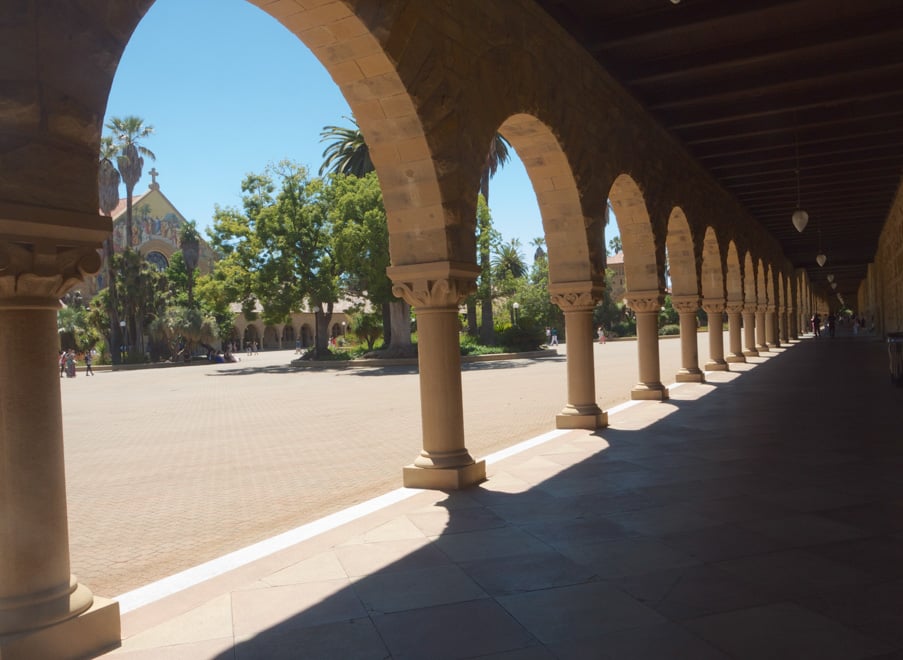Six Bay Area jurisdictions plan to implement a regional stay-at-home order, acting ahead of the state’s timeline and criteria, to curb a steep rise in coronavirus cases and consequent hospitalizations. The restrictions, which take effect starting Dec. 6 through Jan. 4, may complicate Stanford’s plan to provide on-campus housing to frosh, sophomores and new transfers during the winter quarter.
The regional stay-at-home order will apply to Santa Clara, San Francisco, Alameda, Contra Costa and Marin counties, as well as the city of Berkeley, local health officials announced at a news conference Friday afternoon. The order will take effect in Santa Clara County on Sunday evening, prohibiting private gatherings and closing indoor and outdoor dining, personal care services, bars, wineries and museums. Retail, grocery stores and essential businesses can continue operations at 20% capacity.
Stanford President Marc Tessier-Lavigne and Provost Persis Drell told community members that the University is continuing to plan for frosh, sophomores and new transfers to return to campus during the winter quarter at Monday’s Campus Conversation. Stanford’s winter quarter is set to begin on Jan. 11, with staff moving into residential halls on Jan. 2 or 3 and students between Jan. 4 and 9.
“The new guidelines do not change current operations at Stanford,” the University announced Friday night. “Employees should continue working at home unless approved to be on campus and those in essential categories should continue to report to work as scheduled.”
Asked if the stay-at-home order would affect Stanford’s planning for the winter quarter, University spokesperson E.J. Miranda declined to comment.
Stanford’s on-campus student population is expected to increase from 6,000 students in fall quarter to around 10,000 students in winter quarter. While the county remains in the highest-risk “purple” tier, in-person lectures and all gatherings are prohibited, and a curfew is in place from 10 p.m. to 5 a.m. In addition to the stay-at-home order, the county is requiring a 14-day quarantine for individuals who travel more than 150 miles.
Any changes to Stanford’s planning will be communicated to students before the University’s winter close on Dec. 14, according to the provost. The University initially planned to offer on-campus housing to first-year and sophomore cohorts during the fall quarter, but reversed its decision due to “restrictions on activities that would make for a very limiting on-campus undergraduate experience this fall,” the provost wrote in an August email to faculty members.
On Thursday, California Governor Gavin Newsom announced a regional stay-at-home order, requiring all sectors except retail and essential services to close in regions of the state where less than 15% of intensive care unit beds are available.
While the Bay Area region has 25% of ICU beds available, above the 15% threshold, Santa Clara County is particularly impacted with only 14% of ICU beds open. As of Thursday, the county reported a seven-day rolling average of 533 new cases, the highest since the county started recording in March. Available ICU beds across the state could be at capacity by mid-December if the current trajectory continues, according to state projections.
“We cannot wait until after we have driven off the cliff to pull the emergency break,” said Santa Clara County Health Officer Dr. Sara Cody ’85, adding that by acting swiftly, “we can both save lives and reduce the amount of time these restrictions have to stay in place.”
Contact Cameron Ehsan at cehsan ‘at’ stanford.edu.
